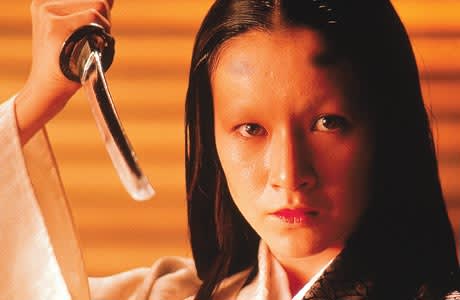In 1985, legendary Japanese director Akira Kurosawa completed what he saw as the culmination of his life's work: Shakespeare's King Lear transposed to the director's favourite period feudal Japan and seen through the lens of Noh theatre, Japanese masculinity and Kurosawa's own epic visual palette. The basic structure of Lear remains in Ran the emperor and head of the Ichimonji clan, Hidetora (Tatsuya Nakadai), decides in his dotage to abdicate his position and give control to his first born son Taro (Akira Terao), shunning his more plainspoken but more loyal younger son Saburo (Daisuke Ryu). The resulting political turmoil in which Taro conspires with second-born Jiro (Jinpachi Nezu) to consolidate power drives Hidetora to madness before he sees how misguided his decision was. In each step, Kurosawa, who worked on the adaptation for more than a decade, puts his own stamp on the proceedings, changing Lear's daughters to Hidetora's sons, adding the political intrigue of a vengeful wife to haunt Hidetora about his warrior past, and allowing the stunning landscape of Mount Fuji (where the production was filmed) to substitute for the mental collapse of Hidetora. ("Ran" means chaos.) Kurosawa is simply masterful, a man at the height of his still considerable powers, and the images of Ran are among the most powerful ever filmed the silent descent of Hidetora from a burning castle amongst them. Criterion has, as usual, done the film great justice with two impressionistic yet fascinating documentaries, A.K., an essay/doc by director Chris Marker that features a lot of on-set footage that reveals working processes, and It Is Wonderful To Create, a shorter, more straightforward appreciation. While those docs must necessarily split their focus between discussions of Kurosawa as an artist and Ran as the art, the fabulous commentary by scholar Stephen Prince helps peel away the many layers of Ran's meaning, symbolism, structure and form. All Criterion releases are the equivalent of a seven-course meal, but this two-disc effort marks a lifelong relationship with Kurosawa's art, one that changes and evolves as the viewer gets closer to Hidetora's age and perspective. Plus: appreciation by Sidney Lumet, video reconstruction through concept paintings and sketches, 28-page booklet, more. (Criterion/Paradox)
Ran
Akira Kurosawa

BY James KeastPublished Feb 1, 2006